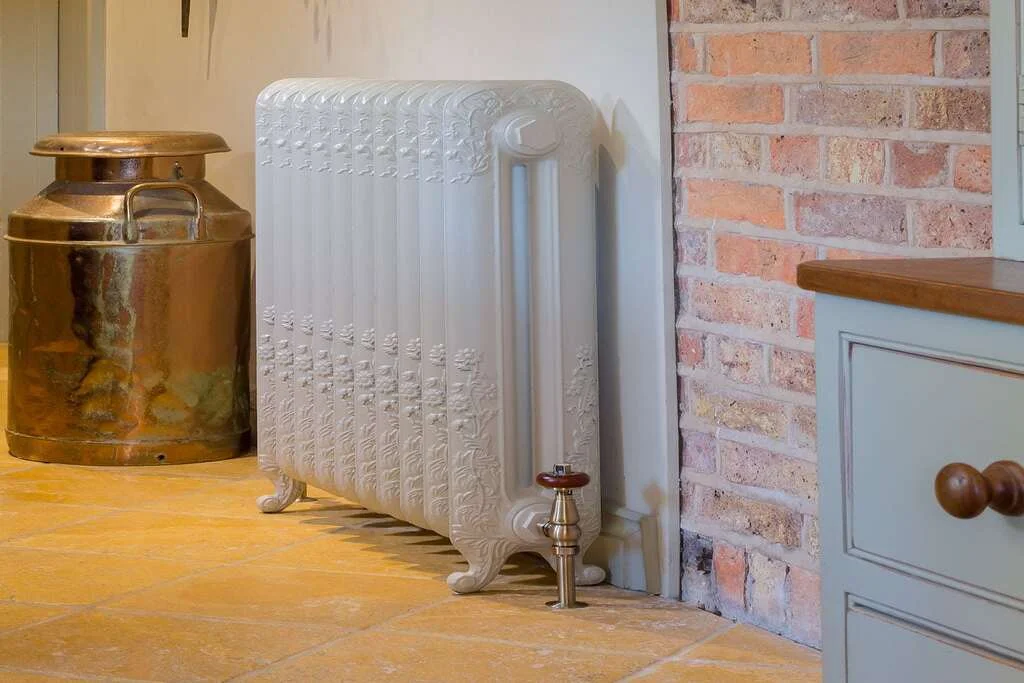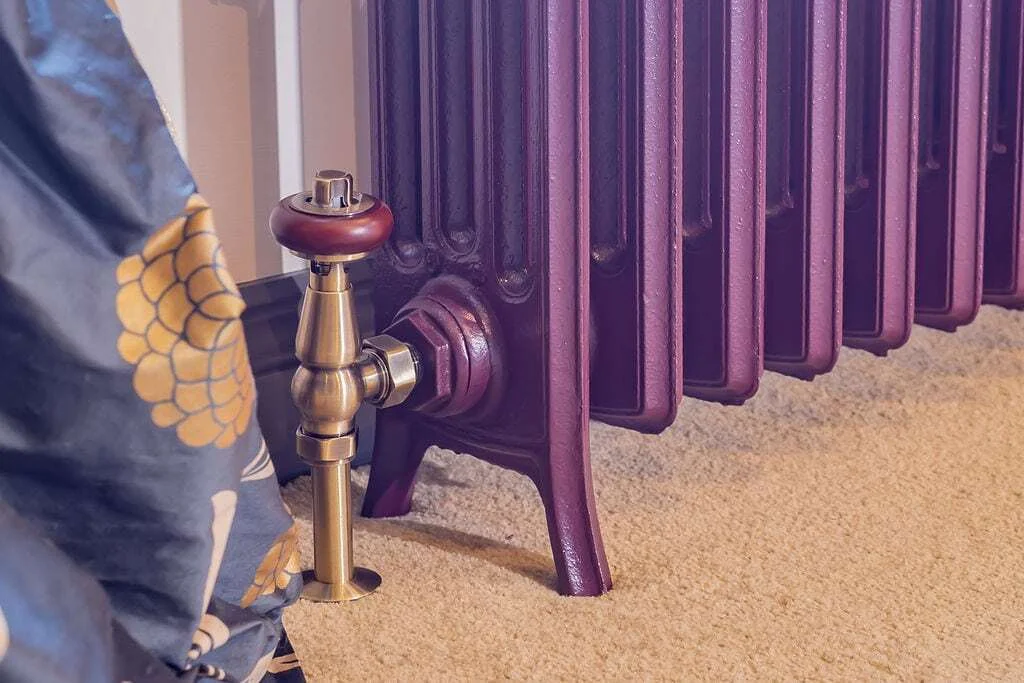-
Free Delivery Over £1000
-
0% Finance Available
-
10 Year Guarantee
-
Made In The UK

Cast iron radiators, with their vintage charm and efficient heating capabilities, have been a staple in many homes for over a century. While they are revered for their durability and aesthetic appeal, it’s crucial to ensure they are used safely to protect both your home and loved ones. This comprehensive guide delves into a myriad of safety tips for using cast iron radiators, ensuring peace of mind alongside warmth.
Just like any other appliance, regular maintenance is key. Ensure that your radiator is inspected annually by a professional. This will help identify any potential issues like rust, leaks, or structural weaknesses before they become significant problems.
Cast iron radiators can become extremely hot to the touch. Consider installing a protective cover or guard, especially if you have young children or pets. This barrier can prevent accidental burns and ensure that curious hands or paws stay safe.
Ensure that your radiator is installed on a sturdy surface that can handle its weight. If you’re unsure about the structural integrity of your floors, consult with a professional before installation. Additionally, make sure it’s securely fastened to prevent any accidental tipping.
Keep the area around your radiator clear. This not only ensures efficient heat distribution but also reduces the risk of flammable materials coming into contact with the hot surface. Avoid placing furniture, curtains, or other combustible materials too close to the radiator.
Make sure all family members, especially children, are aware of the radiator’s potential hazards. Teach them the importance of not touching it when it’s on and the risks associated with placing objects on or too close to it.
Regularly check for any signs of leaks. Even a small leak can lead to mold growth or structural damage if left unattended. If you notice any dampness or discoloration around the radiator, investigate immediately.
While cast iron radiators are not known to release harmful fumes, it’s always a good practice to ensure proper ventilation in rooms where they are used. This promotes good air circulation and reduces the risk of condensation, which can lead to mold growth.
Invest in high-quality valves for your radiator. These are crucial for controlling the flow of hot water and ensuring the radiator operates at optimal efficiency. A malfunctioning valve can lead to overheating or pressure build-up.
If your radiator is malfunctioning, avoid the temptation to fix it yourself unless you’re trained. Incorrect repairs can lead to further damage or potential safety risks. Always consult with a professional.
If you’re considering adding any accessories or modifications to your radiator, ensure they are compatible and safe. Whether it’s a decorative element or a functional add-on, always prioritize safety.
Ensure that everyone in your household knows what to do in case of an emergency related to the radiator, whether it’s a leak, burn, or any other issue. Having a clear protocol can prevent minor issues from escalating.
If you decide to replace or dispose of your cast iron radiator, do so responsibly. Given their weight and size, they can pose risks during disposal. Consult with local regulations or recycling centres to understand the best way to discard them.
Given the weight and structure of cast iron radiators, there’s a potential risk of them tipping over, especially in homes with active children or pets. Consider securing the radiator to the wall using our cast iron radiator wall ties to prevent any accidental toppling.
Overheating can not only be a safety concern but can also lead to increased energy bills. Invest in a good quality thermostat and ensure it’s correctly calibrated. This allows you to maintain a consistent and safe temperature in your home.
It might be tempting to drape wet clothes or towels over the radiator for quick drying. However, this can pose a fire risk. It can also lead to uneven heating and potential damage to the radiator’s surface.
Installing reflectors behind your radiators can help direct heat away from walls and into the room. This not only improves efficiency but also reduces the risk of heat damage to walls, especially if they’re wallpapered or painted with heat-sensitive materials.
Air can get trapped in radiators, reducing their efficiency and leading to cold spots. Regularly bleeding your radiators ensures they work efficiently and reduces the risk of pressure build-up, which can be a safety concern.
If you have toddlers or young children, consider using radiator covers or guards. These not only prevent direct contact with the hot surface but also protect against sharp edges or corners.
Ensure that no electrical outlets or devices are too close to the radiator. The heat can damage electrical devices and increase the risk of electrical fires.
Over time, the pressure within the radiator system can fluctuate. Regularly check the pressure levels and ensure they are within the recommended range. Too much pressure can lead to leaks or even bursts.
The weight of cast iron radiators can exert significant pressure on the floor beneath. Ensure that the flooring under and around the radiator is sturdy and can handle the weight. Reinforce if necessary, especially in older homes where the floor integrity might be compromised.
Over time, cast iron can corrode if exposed to moisture. Regularly check for signs of rust or corrosion. If spotted, address it immediately, either by treating the affected area or consulting with a professional.
The radiator valves. are a crucial component of any radiator. Ensure they are easily accessible and not obstructed. This allows for quick shut-off in case of emergencies and facilitates regular maintenance.
Unusual sounds, like hissing or knocking from your classic radiator, can be indicators of trapped air, sediment build-up, or other internal issues. Address these sounds promptly to prevent potential malfunctions or safety hazards.
While it might be tempting to use the radiator’s flat surface for placing items, avoid overloading it. Excessive weight or placing potentially flammable items can pose risks.
The pipes leading to and from the radiator can become as hot as the radiator itself. Insulate any exposed pipes, especially in areas where people might accidentally come into contact with them.
Dust and debris can accumulate on and around the radiator. Regular cleaning not only ensures efficient operation but also reduces the risk of dust-related fire hazards.
Cast iron radiators, while a testament to timeless design and functionality, come with their set of safety considerations. By adhering to these safety tips and ensuring regular maintenance, you can enjoy the warmth and beauty they bring to your home without compromising the safety of your loved ones. Remember, a proactive approach to safety can prevent potential hazards and ensure a cozy and secure environment for all.




